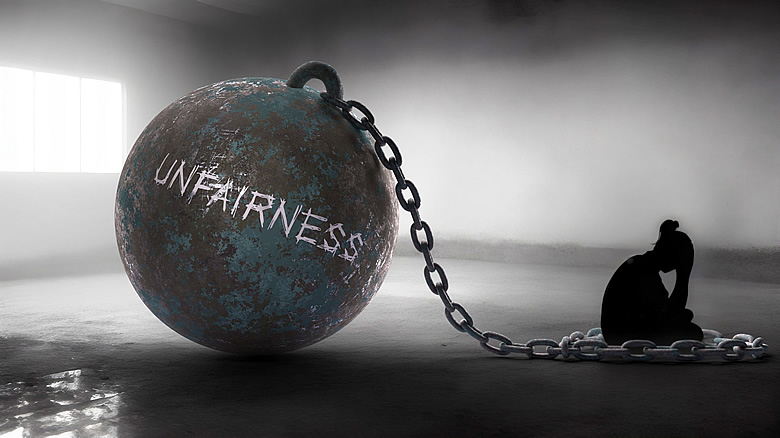Menopause—a Treatable Triple Whammy for Chronic Pain

Research shows that chronic pain is much more common in women than men. Research also repeatedly shows that women are more likely to be treated dismissively when discussing their pain, while receiving less effective treatment.
A recent NIH funded study from UC San Francisco offers new insight into how female hormones help reduce pain. Researchers found that these hormones trigger immune cells near the spinal cord to produce natural opioids, which block pain signals before they ever reach the brain.
This adds to our understanding of why pain is more common in women. It also gives us a new pain treatment tool: Bioidentical hormone replacement (BHRT).
The Gender Pain Gap
An article published in Premier of Victoria showcased that when it comes to pain, women are often overlooked.
Globally, more women report chronic pain than men do. In fact, a survey of over 1,750 Victorian women found that 40% are living with chronic pain.
Approximately half of chronic pain conditions have a higher prevalence in women compared to men, including low back pain and osteoarthritis. And female-specific pain conditions, such as endometriosis, are much more common than male-specific pain conditions such as chronic prostatitis/chronic pelvic pain syndrome. Also, of course, 3/4 of people with fibromyalgia pain are female.
This male female disparity is seen throughout their lifespans, with higher rates of chronic pain being reported in females as young as two years old. And this discrepancy only increases with age, as was demonstrated in a study by the Australian government that showed 28% of Australian women aged over 85 experiencing chronic pain compared to only 18% of men.
The Good News?
This new research reveals a promising path for relieving pain in women: bioidentical hormone support. Topical treatments using bioidentical estrogen, progesterone, and very low-dose testosterone may help ease pain by restoring the body’s natural ability to block pain signals.
This approach is especially relevant for women over 40, as they begin to enter perimenopause. The findings may also explain why fibromyalgia often begins during this stage of life—when levels of estrogen, progesterone, and testosterone start to decline. Importantly, these hormone deficiencies can begin years before they show up in standard blood tests or affect menstrual cycles, making early support even more crucial.
Bioidentical Hormones for Pain Relief
Earlier research by Prof. Hilary White of Dartmouth showed that small doses of testosterone cream in women with fibromyalgia significantly improved pain. Other research has also shown that estrogen treatment can alleviate pain in women. Progesterone, which acts like the body's natural Valium, can also help pain because of its muscle and anxiety relaxing effect.
Chronic pain is on the rise, now affecting one in four Americans—up from one in six—not because effective treatments don’t exist, but because most doctors haven’t been properly trained to use them. Research clearly shows that much of this pain is treatable. The real problem isn't a lack of solutions—it’s a lack of awareness. The good news? Living with chronic pain is no longer necessary.
Compounding pharmacies can create customized creams that combine bioidentical estrogen, progesterone, and very low-dose testosterone into a single topical or vaginal application. These treatments typically cost just $1–2 a day, though they’re usually not covered by insurance. However, some bioidentical hormone options are available through regular pharmacies and are often covered by insurance. All estrogen patches sold at standard pharmacies contain bioidentical estrogen, and the oral medication Prometrium (100–200 mg at bedtime) is bioidentical progesterone.
In addition to bioidentical hormone replacement therapy, numerous other natural options have been proven to be very effective for pain. My favorite combination?
- Curamin®. This is a powerful mix of curcumin, Boswellia, DLPA, and nattokinase. In multiple head-on studies, this was as effective as Celebrex.
- PEA Healthy Inflammation Response (Palmitoylethanolamide). 600-2,400 mg daily. Over a hundred studies have shown this to be highly effective for most kinds of chronic discomfort—even when severe.
My published research has shown that treating the root causes of pain with the S.H.I.N.E.® Protocol (Sleep, Hormones, Infections, Nutrition, and Exercise as able) also dramatically decreases pain.
It is simply no longer necessary for people to remain in pain.

Jacob Teitelbaum, M.D. is one of the most frequently quoted post viral CFS, fibromyalgia, energy, sleep and pain medical authorities in the world. He is the author of 12 books including You Can Heal from Long Covid, the best-selling From Fatigued to Fantastic!, Pain Free 1-2-3, The Complete Guide to Beating Sugar Addiction, Real Cause Real Cure, The Fatigue and Fibromyalgia Solution, and the popular free Smart Phone app Cures A-Z. He is the lead author of eight research studies and three medical textbook chapters on effective treatment for fibromyalgia and chronic fatigue syndrome. Dr. Teitelbaum appears often as a guest on news and talk shows nationwide, including past appearances on Good Morning America, The Dr. Oz Show, Oprah & Friends, CNN, and FoxNewsHealth.
Websites: Vitality101.com | EndFatigue.com
Facebook Support Group: Recovering from Fibromyalgia, Chronic Fatigue, and Long COVID
Facebook Page | Instagram
